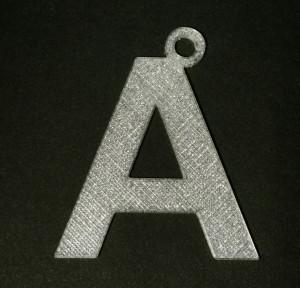
While he had initially started 3D printing for fun, Souta is now actually making a living with it by offering his years of design experience for some contracted design and fabrication work. But he is also looking to use 3D printing to develop his own line of 3D printed accessories, printer upgrades and equipment. While testing out different 3D printing processes, Souta inadvertently applied a physics phenomenon known as Total Internal Reflection (TIR) to his 3D printed parts and noticed that the result was a shimmering part that looked like no 3D printing finish he had ever seen before.
TIR is the effect of light being reflected and refracted through material that is denser than another, like light being shined through water. While the phenomenon was initially unintended, Souta believed that it had obvious applications for costume jewelry so he began working with it until he had created the ideal structure to reflect the maximum amount of light. In order to verify that the TIR printing process would work, Souta designed a series of plastic letters and watch straps to prove it would have usable applications.
By 3D printing parts that have an internal structure containing thousands of these reflective surfaces, ordinary plastic will give off dramatically magnified amounts of light. The resulting bling effect is similar to a high-quality gemstone such as a diamond that has been expertly cut. The reflective structure is made by crossing strands of filament over each other in specific patterns that will exploit the contrasting light refraction rates between plastic and the gaps within the structure.
The process will work with just about any commercially available filaments, including both rigid plastics and flexible materials. However Souta says that it seems to work best with clear or translucent colored filaments. So far Souta said that he has been unable to identify anyone else documenting this 3D printing application before, so he is looking into options for selling or licensing his printing technique to any interested jewelry designers. Let’s hear your thoughts on this technique in the 3D Printed Bling forum on 3DPB.com.